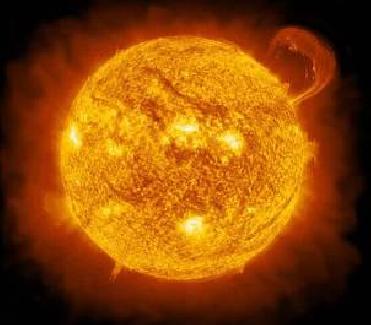
A file photo
LONDON (PTI): NASA is embarking a new ambitious mission to unravel the sun's interior mechanisms that may help predict solar storms that cause chaos on Earth.
The US space agency hopes the mission -- scheduled for February 9 from Space Launch Complex-41, Cape Canaveral AFS, Florida -- will help understand the causes of extreme solar activities such as sun spots and solar winds and flares.
According to NASA, after its launch, the Solar Dynamics Observatory (SDO) will spend five years in orbit trying to discover how such solar phenomena are created.
Understanding of those activities, the scientists hope they will be able to produce reliable forecasts of "space weather" and provide advance warnings of any threat, The Sunday Times reported.
Scientists have long said that solar disturbances on the sun can trigger dangerous x-rays, charged particles and magnetic fields that can disrupt power supplies, communication signals and aircraft navigation systems on Earth.
"It is NASA's first weather mission and it aims to characterise everything on the sun that can impact on the Earth and near Earth," said project scientist Barbara Thompson.
"We know things happen on the sun which affects spacecraft, communications and radio signals. If we can understand the underlying causes of what is happening then we can turn this information into forecasts.
The key thing about the mission, Thompson said, is that it is not just pure science for its own sake. "There is likely to be a direct and immediate benefit for people."
Orbiting the Earth at a distance of 22,300 miles, the observatory will measure fluctuations in the sun�s ultraviolet output, map magnetic fields and photograph its surface and atmosphere.
NASA estimates that the SDO, which experts have linked to a 'giant microscope', will transmit as much as 50 times more scientific data than any other mission in the space agency�s history.
Each image will consist of more than 16m pixels and will be 10 times clearer than high-definition television. And the amount of data sent back to Earth daily will be equivalent to downloading 500,000 songs a day from the Internet, the report said.
Solar magnetic storms and space weather disturbances have had a number of dramatic consequences over the years. In 1989, millions of people in Canada and the US were left without electricity for more than nine hours after a magnetic storm sent shockwaves through the Hydro-Quebec power grid.
Five years later, a geomagnetic storm temporarily knocked out two Canadian satellites and Intelsat-K, an international communications satellite.
The most powerful solar storm in history, known as a 'superstorm', occurred on September 1, 1859. It caused the failure of telegraph systems in Europe and North America.
 Previous Article
Previous Article Next Article
Next Article












The Indian Air Force, in its flight trials evaluation report submitted before the Defence Ministry l..
view articleAn insight into the Medium Multi-Role Combat Aircraft competition...
view articleSky enthusiasts can now spot the International Space Station (ISS) commanded by Indian-American astr..
view article